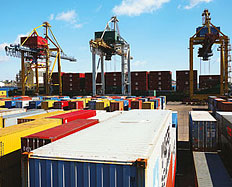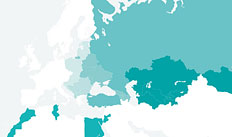Chapter 1
Reform efforts
Egypt, Jordan, Morocco and Tunisia embarked on a process of market-oriented structural reform in the mid-1980s in order to create legal and institutional frameworks conducive to investment, entrepreneurship and market-driven growth, and to promote privatisation in their inflated and unproductive public sectors. Although these reforms were partly successful in achieving higher growth, unemployment remained chronically high, especially (and unusually) among the educated youth, and the benefits of growth were not evenly distributed. The reform agenda remains incomplete and the SEMED countries face significant challenges in improving their business environments, consolidating fiscal positions and increasing institutional capacity.
In Egypt comprehensive reforms were introduced in two waves during 1991-98 and 2004-08. In the first round one-third of state-owned enterprises were privatised, many investment and production controls were abolished and tariffs and capital account restrictions were reduced. The second wave saw significant financial sector reforms (including the privatisation of the third-largest bank) and some improvements in the business environment, including an easing of conditions for enterprise start-ups and the creation of a competition agency. On the fiscal side, reforms aimed at modernising tax administration (coupled with increases in energy retail prices in 2005-06) led to a reduction in the fiscal deficit although it remained above 6 per cent of GDP for the budget sector.
However, major elements were lacking from the reforms, such as an effective strengthening of state institutions and a correction of key market distortions. The state's role as regulator, guarantor of competition and enforcer of contracts remains weak and judicial capacity is low, posing significant obstacles to private-sector development.
Jordan's first wave of structural economic reforms through the 1990s was characterised by fiscal consolidation and exchange rate devaluation to ease fiscal and external imbalances. The initial privatisation drive during this period was continued in the second round of reform in the early 2000s, which has seen the retreat of government ownership from most economic sectors. Since its accession to the WTO in 2000, Jordan has entrenched its open economy status through unilateral tariff reductions and trade liberalisation. In addition, financial sector regulations have been upgraded and improvements made in the business environment.
The main reform challenges for Jordan are to improve governance and to enhance competitiveness and private sector development. This requires an investment-friendly legislative framework, including appropriate public-private partnership mechanisms to enable the large-scale infrastructure development that the economy needs. Reducing vulnerability to external shocks is another challenge, especially in light of a worsening fiscal position caused by increases in subsidies and budgetary pressures resulting from disruptions to gas supplies from Egypt. The energy sector also needs major reforms to reduce import dependence and promote renewable sources.
Morocco made substantial progress in fiscal and structural reform in the early 2000s and implemented a number of large-scale privatisations in service industries. The energy, telecommunications and transport sectors were liberalised, import tariffs were reduced and there was an overall increase in competitiveness. Reforms in public finance were also carried out, increasing the efficiency and return of the tax administration system, and the current and capital accounts were liberalised for non-residents. In addition, reforms in the financial sector improved bank supervision and reduced foreign currency exposure.
Nevertheless, challenges still confront Morocco. Earlier privatisations omitted utilities and natural resources, and reforms (including to tariffs) are still necessary in the energy and infrastructure sectors. A key element of fiscal consolidation is subsidy reduction, which the government has sought to address by increasing fuel prices from June 2012. In addition, there is scope for improving the business environment and the competitiveness of various sectors by reducing burdensome regulation, improving corporate governance and strengthening institutional capacity. For example, the government's Plan Maroc Vert aims to address these issues in the agricultural sector (see below).
Tunisia undertook a series of stabilisation and structural reforms from 1986-2004 to diversify its economy after a fall in world oil prices led to unsustainable fiscal and external imbalances in the mid-1980s. These reforms also helped create a better institutional framework and business environment, enabling accession to the WTO in 1995. Reforms were also implemented to advance the financial sector, liberalise trade and exchange rates and privatise non-strategic industries. However, subsequent measures had the effect of boosting the competitiveness of an "offshore" sector of the economy (through generous benefits) at the expense of less developed "onshore" activities. Also, despite some efforts in 2005-10 to promote the privatisation agenda, the government still retains significant control in a number of sectors, especially finance.
Challenges still facing the Tunisian economy include addressing excessive labour market regulation to tackle the significant skills mismatch at the core of the country's high structural unemployment, and improving the business environment across sectors through more effective institutional frameworks and operation. Weaknesses in the financial sector, which have repercussions for many areas of the economy, also need to be overcome, by strengthening the banks and facilitating more private-sector involvement in economic activity.







